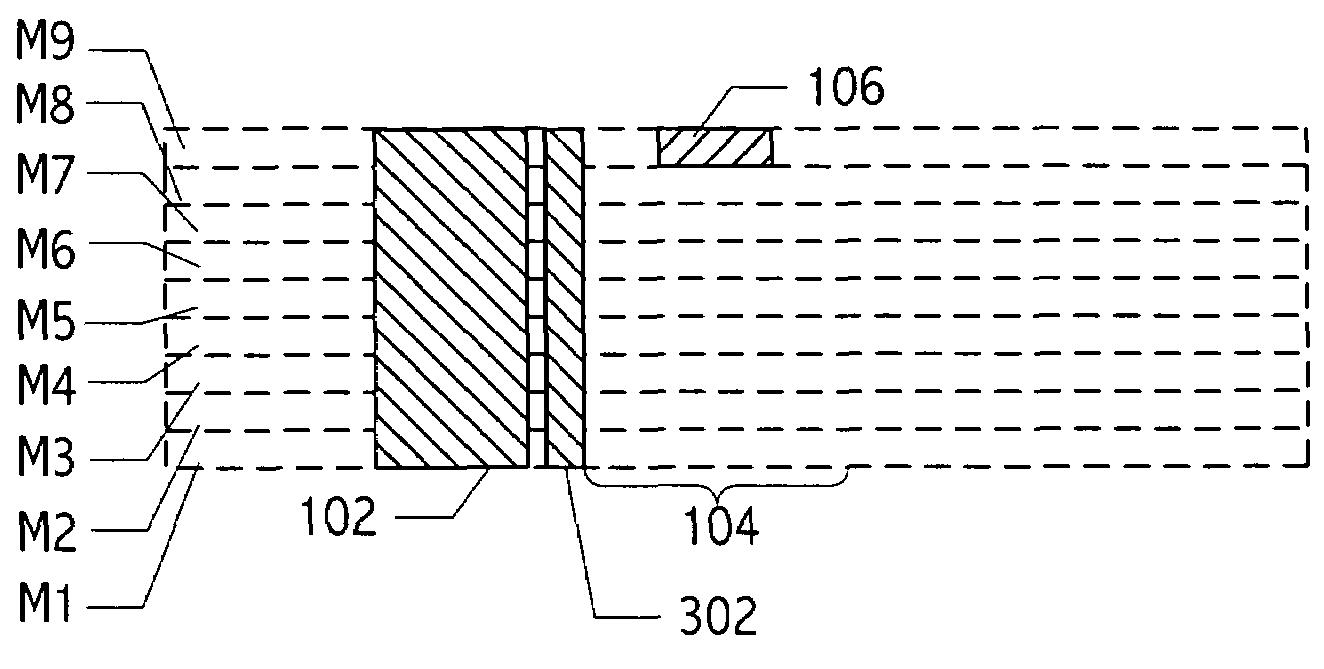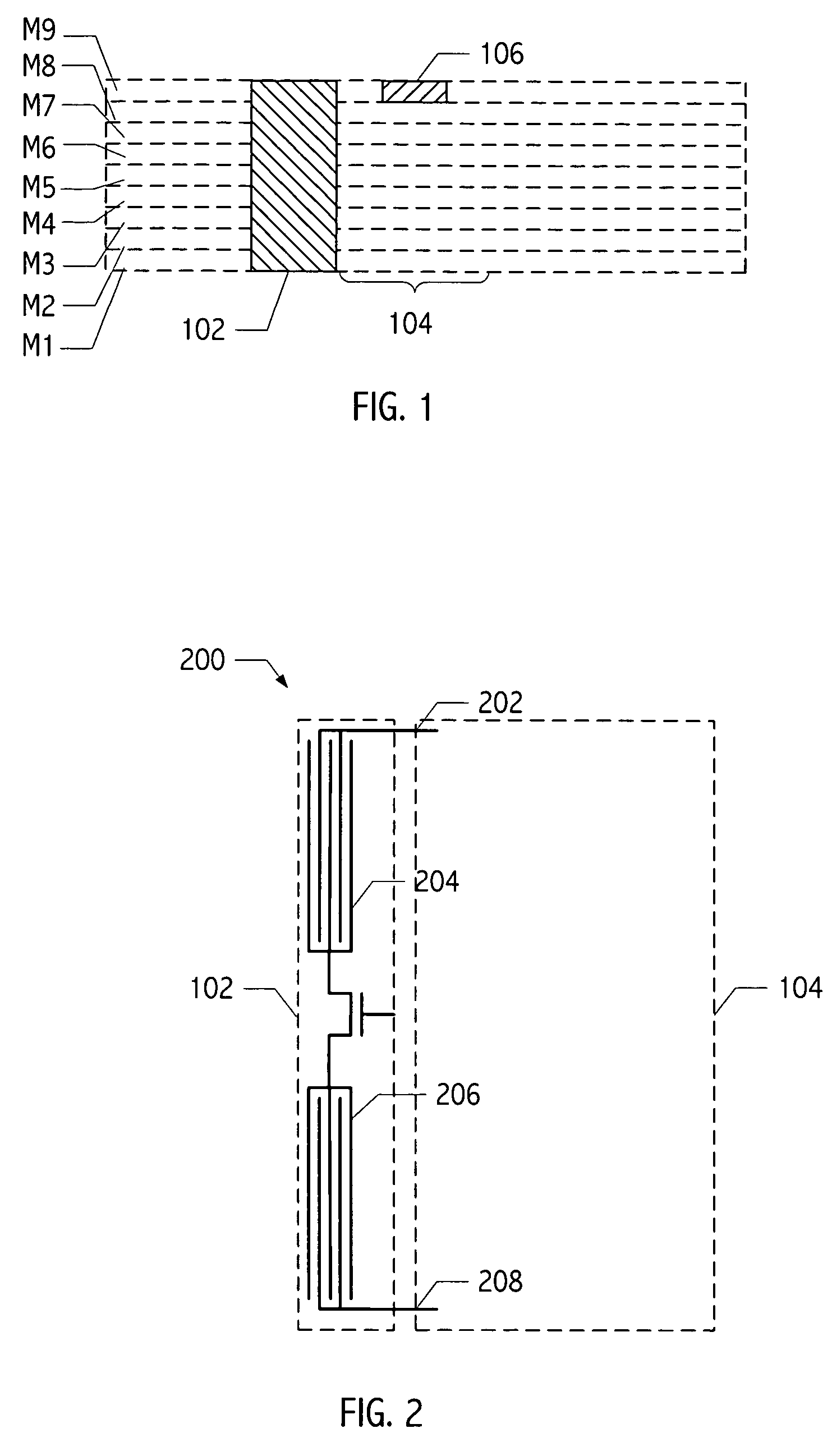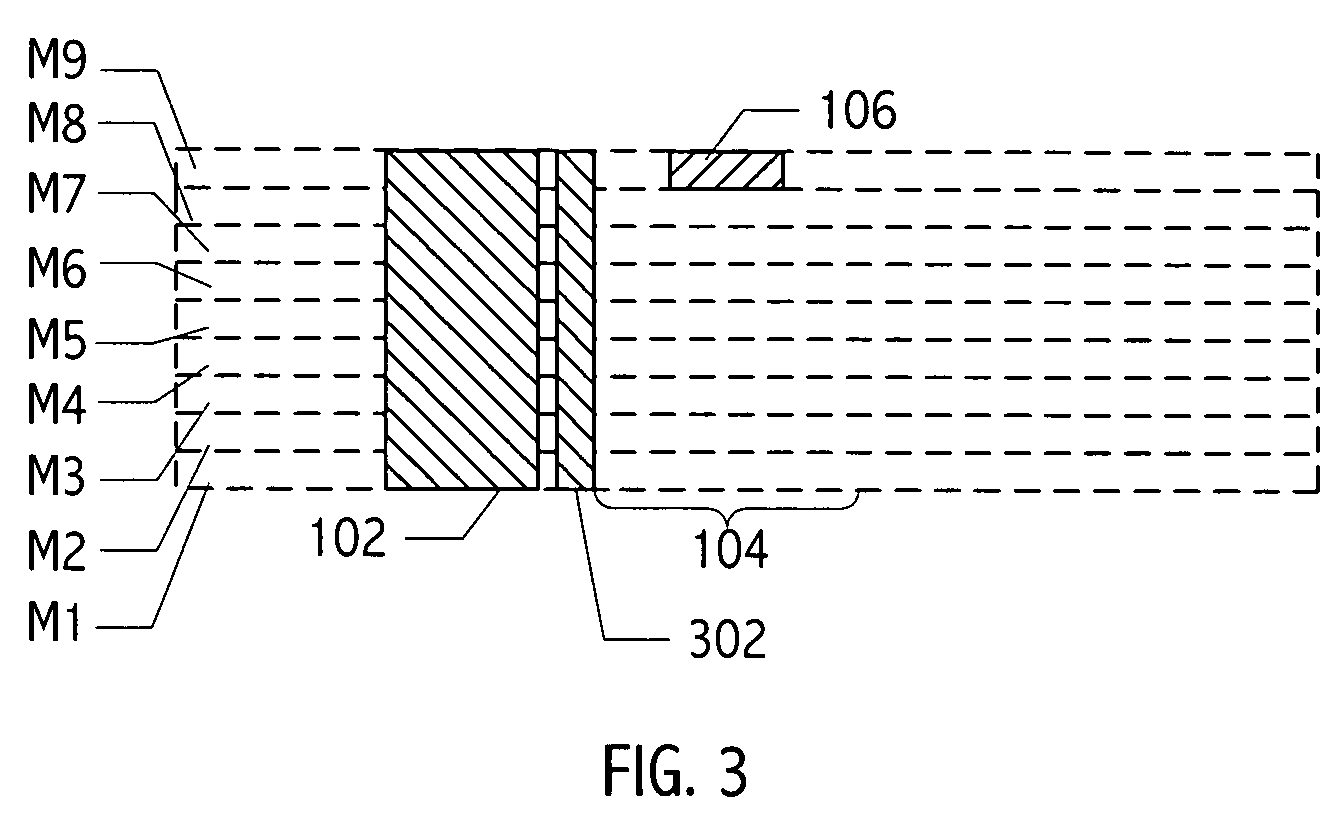Method and structure for forming relatively dense conductive layers
a technology of conductive layer and conductive layer, which is applied in the direction of semiconductor/solid-state device details, semiconductor devices, electrical devices, etc., can solve the problems of increasing susceptibility to manufacturing defects and general performance degradation of the integrated circuit, and achieve the effect of reducing manufacturing defects
- Summary
- Abstract
- Description
- Claims
- Application Information
AI Technical Summary
Benefits of technology
Problems solved by technology
Method used
Image
Examples
Embodiment Construction
)
[0017]Referring to FIG. 1, an exemplary inductor (e.g., inductor 106) and a region of high conductor density (e.g., region 102), are formed in a typical integrated circuit manufacturing process. A region of high conductor density is a region including conductive structures. For example, an integrated circuit manufacturing process may require that conductive layers have a conductor density ranging from 20 to 80%. The density requirements will depend upon a particular manufacturing process. Typical conductors are formed of metals such as copper or aluminum. A volume of space beneath inductor 106, e.g., region 104, is void of conductive structures, i.e., the space is a region of low metal density included to prevent the electromagnetic field of the inductor from inducing a current in a metal structure that generates an electromagnetic field that counteracts the field of the inductor.
[0018]One structure that may be formed in high density metal region is a capacitor shown in FIG. 2. Typ...
PUM
| Property | Measurement | Unit |
|---|---|---|
| density | aaaaa | aaaaa |
| conductive | aaaaa | aaaaa |
| impedance | aaaaa | aaaaa |
Abstract
Description
Claims
Application Information
 Login to View More
Login to View More - R&D
- Intellectual Property
- Life Sciences
- Materials
- Tech Scout
- Unparalleled Data Quality
- Higher Quality Content
- 60% Fewer Hallucinations
Browse by: Latest US Patents, China's latest patents, Technical Efficacy Thesaurus, Application Domain, Technology Topic, Popular Technical Reports.
© 2025 PatSnap. All rights reserved.Legal|Privacy policy|Modern Slavery Act Transparency Statement|Sitemap|About US| Contact US: help@patsnap.com



